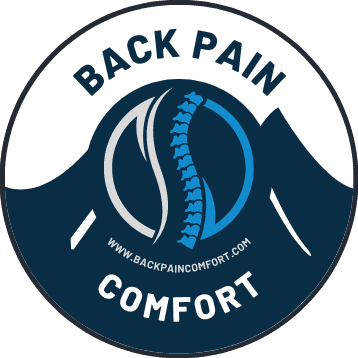
It’s a typical Monday morning. You shuffle into your office, grab your morning brew, and settle into your desk chair. As the hours tick by, a familiar discomfort starts to set in—your back aches. By Friday, you’re practically dreaming of a masseuse. Sound familiar? For countless individuals, the desk job lifestyle has become synonymous with back pain. But why is this so prevalent, and what can you do about it?
The Link Between Desk Jobs and Back Pain
Desk jobs, though often perceived as low risk, come with their own set of health challenges. One primary concern is prolonged sitting. When we remain seated for extended periods, especially with poor posture, the spine endures unnecessary pressure. This can lead to muscle tension, strain, and over time, chronic back problems.
Our natural spinal shape is an ‘S’ curve. This structure absorbs shock, maintains balance, and enables a range of motions. However, prolonged sitting, especially in a slouched position, transforms this ‘S’ shape into a ‘C’ curve. Over time, this can lead to disc compression, muscle imbalances, and other spinal issues.
Solutions for a Pain-Free Work Day
- Ergonomic Setup: Ensure that your chair supports the curve of your spine. Your feet should be flat on the ground, and your screen should be at eye level. A proper ergonomic setup reduces the strain on your back, neck, and shoulders.
- Regular Breaks: Remember the 20-20-20 rule. Every 20 minutes, look at something 20 feet away for at least 20 seconds. Additionally, stand, stretch, or walk for a few minutes every hour. This disrupts long periods of sitting and improves blood circulation.
- Posture Check: Mind your posture. Think tall! Your head should be above your shoulders, and the top of your monitor should be at or just below eye level. Keep your elbows close to your body and form an angle between 90° and 120°.
- Exercise Regularly: Engage in activities that strengthen your core and back muscles. Pilates, yoga, and specific strength-training exercises can help maintain a healthy back.
- Stay Hydrated: Drink enough water to keep your discs—shock absorbers between each vertebra—hydrated and healthy.
- Mind Your Eyes: If you’re leaning forward to read from your screen, it might be time to visit an optometrist. Squinting or struggling to read can lead to a forward lean, which is detrimental to your back’s health.

The Role of Stress
An often-overlooked factor in back pain is stress. When we’re stressed, our body’s response is to tense up, particularly around the shoulders and spine. This added tension can exacerbate back issues. Simple relaxation techniques, like deep breathing or short meditations, can reduce stress and its toll on the back.
Beyond the Desk: Lifestyle Considerations
What you do outside of work also affects your spinal health. Engage in regular physical activity. Even simple exercises, like walking or cycling, can make a difference. Furthermore, ensure you’re getting adequate sleep. A good mattress and sleep posture are essential for a healthy back.
Additional Measures to Combat Back Pain
- Lumbar Support: Incorporating a lumbar pillow or support into your chair can help maintain the spine’s natural curve. This can reduce the chances of slouching and offer support where your back needs it most.
- Footrest: If your feet don’t comfortably rest on the ground, using a footrest can elevate them, ensuring proper posture. This reduces strain on the lower back, ensuring better weight distribution and lessening fatigue.
- Alternate Workstations: Consider a sit-stand desk, allowing you to transition between sitting and standing throughout the day. Standing desks alleviate the pressure on the back and help engage different muscle groups.
- Physical Therapy: If your back pain persists or is recurrent, consider seeking physical therapy. A therapist can provide targeted exercises, stretches, and advice to alleviate and prevent pain.

Conclusion
The modern desk job, with its sedentary nature, has stealthily emerged as a prominent culprit of back pain. But by being proactive and making simple adjustments to our daily routine, we can combat this discomfort. A healthy back doesn’t just mean a pain-free workday but also translates to a happier, more productive life. So, the next time you’re settling into your desk chair, remember that a little attention to your back today can prevent a world of pain tomorrow. Your back will thank you!






